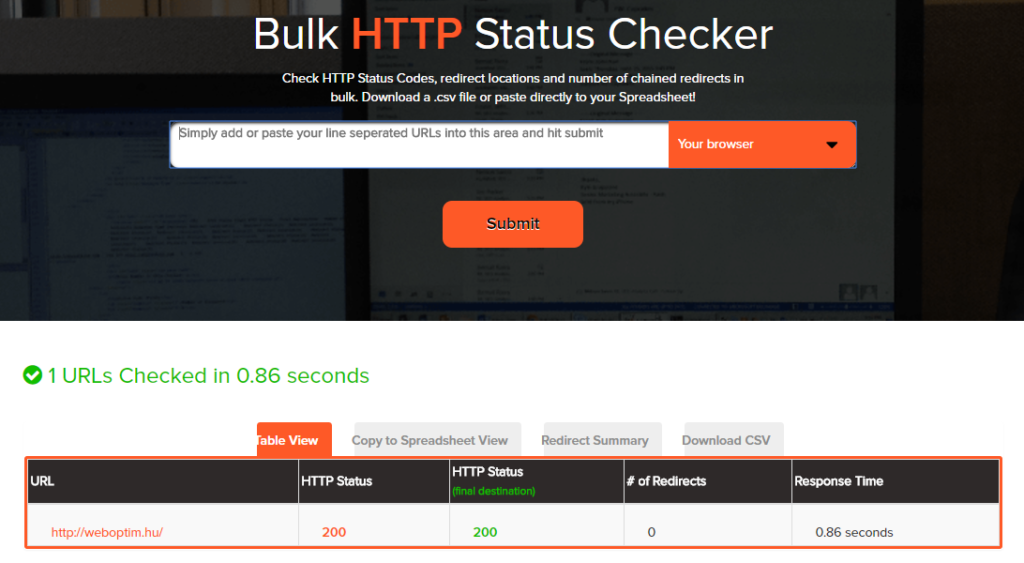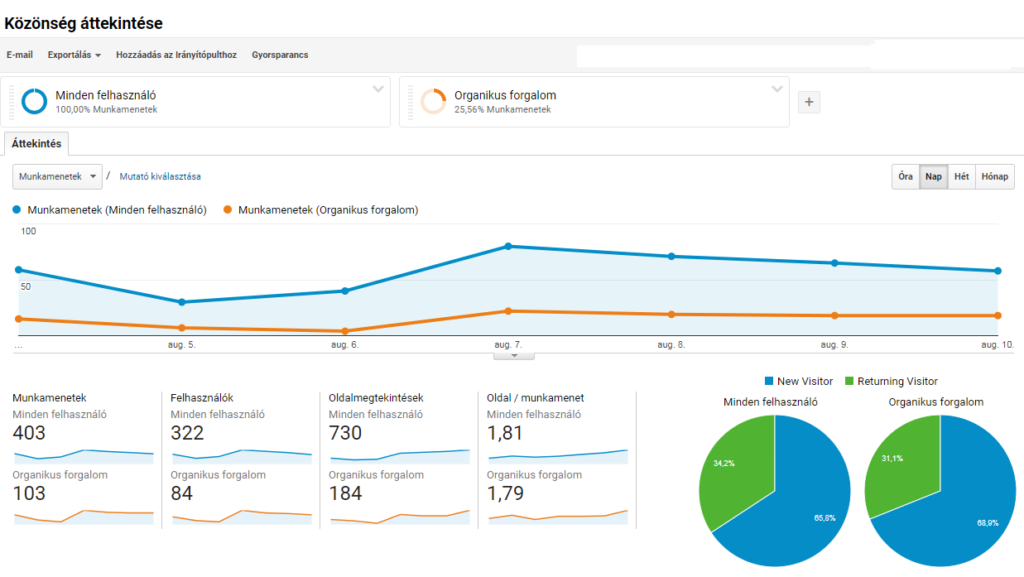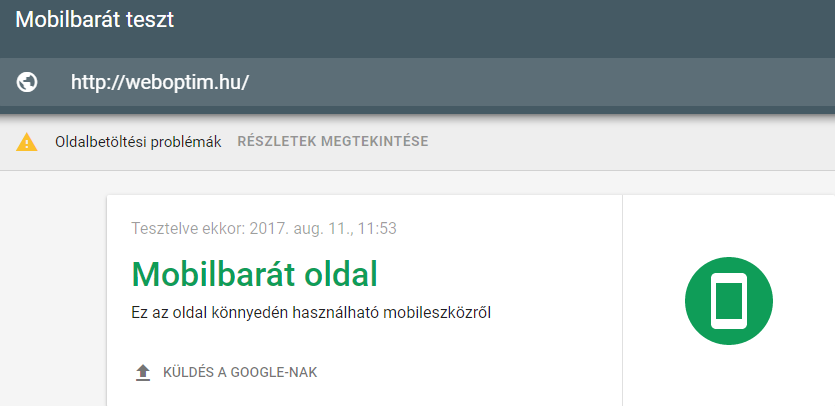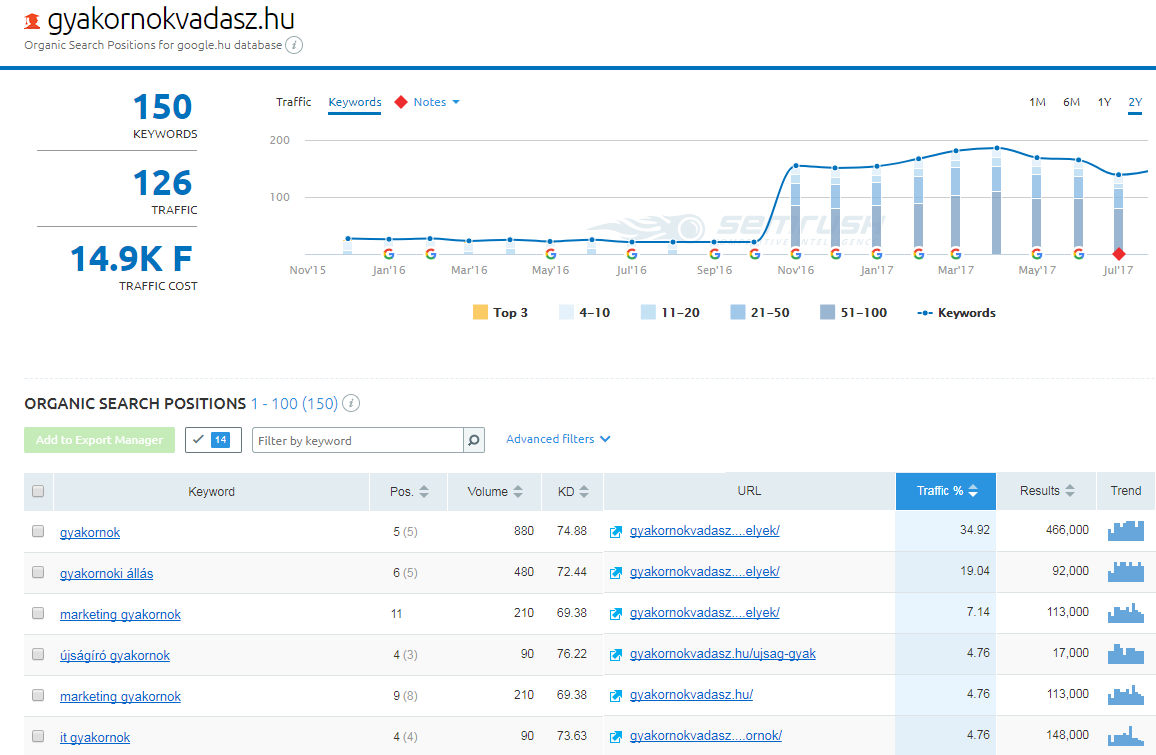Google rankings are getting worse - 10 things you can do | Weboptim
Nobody likes a drop, whether it's important keyword rankings or a single secondary keyword. While fluctuations are inevitable, especially with Google's ever-changing algorithm updates, it's never a good thing when rankings start to go in the wrong direction.

The following 10-step process can help you identify the source of your problems in order to solve them and regain your rankings.
Step 1: Check the "basics"
When monitoring keyword performance, we sometimes focus too much on modern strategies, while underestimating the importance of the "basics".
Why put too much emphasis on link text ratio, speed or link optimisation when the ranking problem could easily be solved directly on the website?
Does the page return 200 HTTP status codes?
Status codes in the 200 series indicate that the website is communicating successfully.
If you see that your page is not giving you a status code of 200 OK, but 404 (page not found) or 410 (page has been permanently removed), then you have a problem. We have several tools to check the http response code.
Can the robots map the site?
The robots.txt is a text file located in the top-level directory of the web server that gives instructions on how robots should interact with our website. Within the file, you can specify inclusions and exclusions for content, such as disallowing crawling of a "dev" website or indexing of duplicate pages.
It is possible that we have inadvertently set the restrictions too narrow, preventing the robots from crawling the main pages. Always double-check the robots.txt file.

Step 2: Check your SEO basics
Despite the fact that basic SEO elements are becoming less important than search engine ranking factors, they still have an impact. Check basics like page title, meta descriptions, headers.
Have the main page title and meta tags been optimised and are they displayed correctly in the search results?
The home page title is a simple way to tell search bots what your page is about. If it's too general, or if it's not pulled in correctly by Google, it can affect your rankings.
Although meta description has no direct impact on SEO, a persuasive text can improve organic click-through rates.
Is the main page H1 tag optimised?
In addition to the information in the title tag, the main heading (H1) lets you know the main purpose of your page. However, unless the page contains an H1, search bots will not distinguish it from the content of the page. Check the source code of the page to ensure that each page uses a unique and relevant H1 element.
You'd be surprised how often one or more of these important elements cause a drop in rankings. Let's fix the problem!

Step 3: Check Google algorithm updates
Now that the Penguin link algorithm and the Panda quality algorithm are Google's basic algorithm and is updated in real time, we must always be alert to the fact that even the smallest changes can affect the ranking.
If you do things right - think in-depth content writing, intuitive website layout, fast load times - don't stress about algorithm changes. If done right, it will pay off in the long run.
Step 4: Check Google Webmaster tools
Google's algorithms are opaque, and the search giant knows what to expect from a website. Follow its guidelines for better search performance.
A Google Webmaster tools is a free service provided by Google to help you monitor and optimise the visibility of your website in search results.
Check for crawling errors, server errors, DNS errors.
You can submit a sitemap showing the structure of your website. Once loaded, check that there is not a large discrepancy between the number of URLs submitted and the number of URLs indexed by Google. If the numbers are not displayed correctly, important pages may be blocked.

5. Check Google Analytics
A Google Analytics shows if traffic or an indicator such as duration, number of pages or bounce rate has decreased. Have we made any changes to the website recently? If the time of the change coincides with the changes you see in Analytics, a move in a different direction may help to restore traffic.
We can also find out how people found our website, how they behave on the site and what influences they experience before completing the action.

6. Check the content
Quality content has never been more important. Is our content unique, interesting and valuable? Or duplicate, short and worthless? This can have a big impact on rankings.
Users do not like bad content. Although the value of content is mostly subjective, it can be measured by some metrics. For example, if users don't stay on a sub-page for a long time, or if they leave without clicking further, it indicates that our content is not very good.
7. Check the speed of the website
Does the website take longer than 3 seconds to load? If so, let's check. Speed is essential. There are a number of different tools that can tell you how fast your site is and give you suggestions on how to improve load times.
Even hyper-fast websites can be taken to the next level with optimisation, such as browser caching, code optimisation, image optimisation, resource compression.

8. Check your mobile
Never before has it been so important to provide a mobile site that is clear, intuitive and delivers value to users. Not all elements or features that work on a desktop need to be ported to mobile, only those that are easy to use on a mobile device.

9. Check the link profile
Inbound links are links that point to our website from external pages. They are important because they prove that our site matters, they say something about its value and that others trust it.
If you have a "small" link profile, a few links from untrusted sites or a lot of link spam links, it can hurt your rankings.
If your rankings are slipping, it's always wise to check your link profile to make sure everything is in order.

10. Check the keyword list
If you are looking at the wrong keywords, does it matter if your rankings go down?
For example, if you have a digital marketing agency, but you no longer provide graphic design services and you remove the relevant sub-page from your website.
It's natural to take a back seat to this keyword, and that's fine.
However, if the rankings of keywords that bring traffic and leads are deteriorating, then intervention is needed.
The correct keywords have the following 3 parameters:
- most sought after by our target audience
- realistic to be on the front page
- likely to result in a conversion
The keywords you target may not be the best ones at the start of the campaign, so make sure you regularly re-evaluate your campaign.
If we are not proactive in tracking keywords, adding or removing words, it can distract from the success of the real ranking. Remove words that are not realistic or do not result in conversions.

Conclusion
If your site is showing a drop in rankings, it's worth reversing this with small and simple optimisation steps. Follow the 10 steps above and you will probably find the mistakes that need to be corrected.
Source: searchenginejournal.com